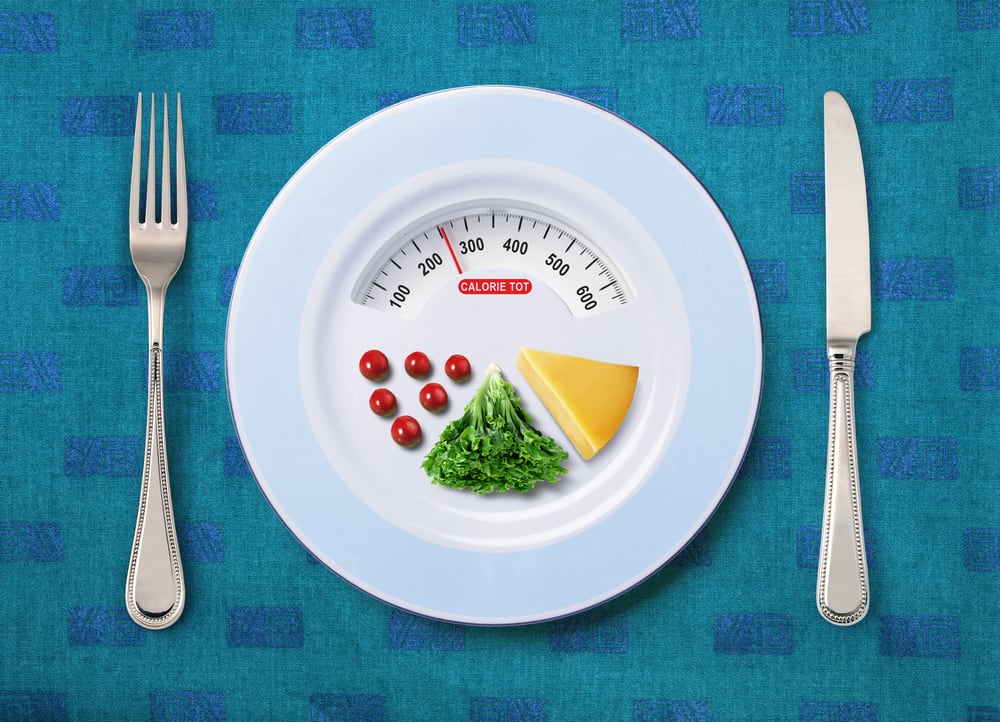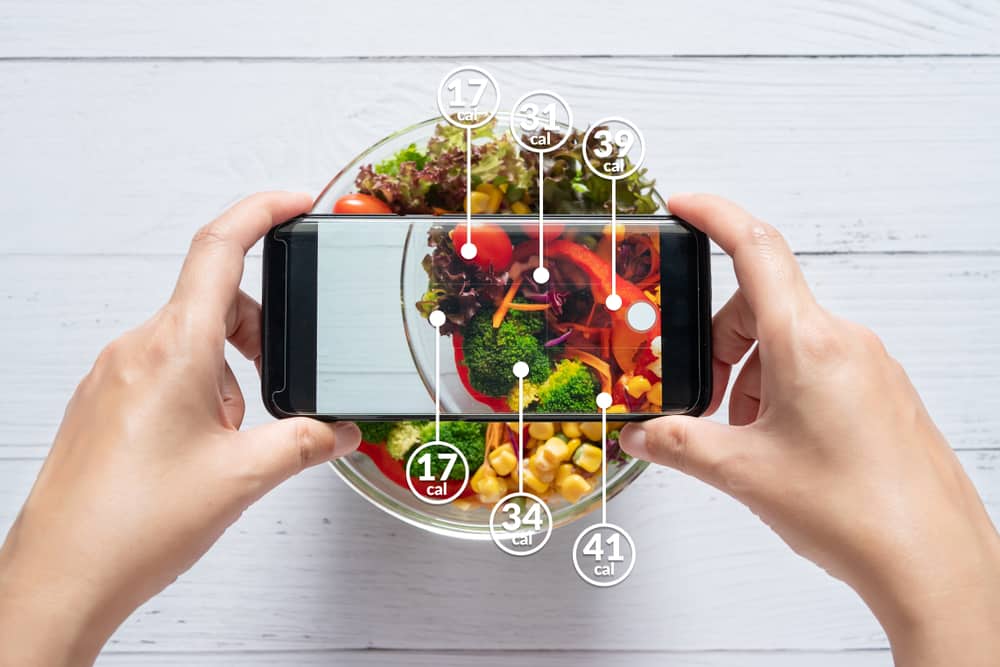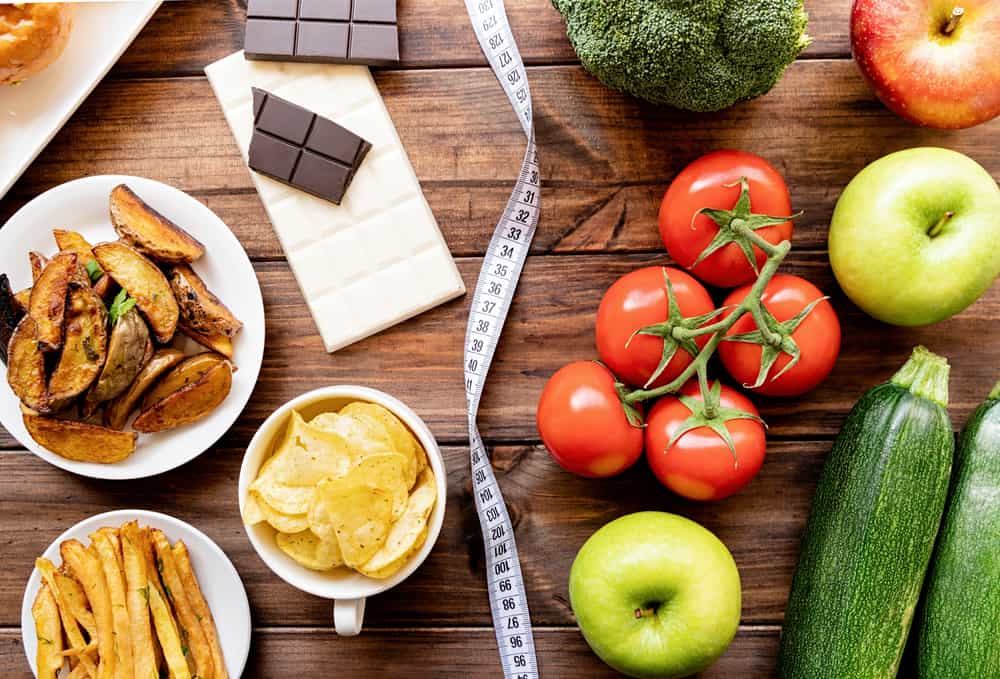A Complete Guide to the Volumetrics Diet: What Is It and Does It Work?
If you are someone who is trying to lose weight, then there is a good chance that you have encountered a few challenges along the way. After all, if losing weight was easy, there wouldn’t be an entire industry designed around helping people find ways to exercise regularly, eat healthily, and succeed in their weight loss goals.
Even though you have probably tried a lot of diets in the past, one diet that you might not have tried yet is called the volumetrics diet, which is designed to help you lose weight by combating hunger pains. It is no secret that hunger pains are one of the most challenging parts of going on a diet. After all, if you constantly feel like you are hungry, you are going to have a hard time restricting your calories.
This diet is designed to help you fill up on food that is relatively nutrient-dense, meaning your body is going to have to work harder to digest it. Since your body has to spend more energy digesting this food, you are going to burn more calories in the process. Thanks to the lengthy digestive time, you are also going to feel full for a longer amount of time, which means you are not going to feel the urge to start snacking in between meals.
If you are interested in giving the volumetrics diet a try, then get ready to learn more about this diet below!
The Basics of the Volumetrics Diet
The goal of the volumetrics diet is to help you lose weight. On this diet, you are going to be looking for foods that have relatively high water content. As a result, they are also going to have relatively low-calorie content. By targeting foods that are relatively dense when it comes to nutrients, you are going to be able to combat hunger pains that may plague other diets you have tried.
There is a lot more to the volumetrics diet than just targeting foods that have a lot of water in them, though. You are also going to be encouraged to live a healthy lifestyle. By targeting the root cause of your struggles in the past, you are going to be able to affect lifestyle changes. This includes exercise, keeping a food journal, and learning about the nutrients that you consume.
Overall, the goal of the volumetrics diet is to help you feel full all about eating fewer calories. This diet is based on a book that was published by a nutrition scientist, Dr. Barbara Rolls. In her book, she provides recipes, guidelines, and a variety of information regarding how you can calculate the calorie density of some of the meals that you consume.
She encourages everyone to consume foods that are relatively dense in nutrients. The followers of this diet are also supposed to target foods that are low in calories and high in water. Some of the examples include soups, vegetables, and fruit. Additionally, while following this diet, you are supposed to limit foods that are relatively dense and calories including cookies, oils, and candies. When you are able to restrict your diet in this manner, you can cut your calorie intake, feel full for a longer amount of time, and promote weight loss.
Given all of this information, you might still be wondering whether this diet is still for you. Take a look at how the volumetrics diet works and review the benefits and drawbacks before you decide whether this diet is appropriate for your goals. Keep in mind that the volumetrics diet is supposed to provide you with long-term lifestyle changes instead of short-term solutions.
When it comes to long-term weight loss, a program like Noom may be perfect. This clinically-backed system uses health tracking tools, 1:1 coaching, and custom meal plans to help users lower weight and create healthier habits. Right now, Noom is offering a free trial offer.
How Does the Volumetrics Diet Work?
This diet is going to divide your food into four separate categories. These categories are based on the calorie density of each individual food category. The categories include:
- Very low-calorie density foods: The calorie density of foods in this category is less than 0.6.
- Relatively low-calorie density foods: This category includes foods that have a calorie density of somewhere between 0.6 and 1.5.
- Medium calorie density foods: Foods in this category have a calorie density of somewhere between 1.6 and 3.9.
- Very high-calorie density foods: Foods in this category have a calorie density of 4.0 or greater.
In her book, Dr. Rolls provides in-depth information on how calorie density can be calculated. The goal is to divide the number of calories in a single serving of a certain food by its weight in grams, which will make you end up with a figure somewhere between 0 and 9. Foods that have a calorie density of 4.0 or greater are considered to have a very high-calorie density.
If you have a food with high water content, you are going to end up with a low-calorie density score. Keep in mind that water is heavy, but it does not contain any calories. If a food product has high water content, it is going to weigh more without necessarily having a high caloric density. For example, vegetables such as broccoli are usually going to score relatively low when it comes to calorie density, while desserts such as chocolate are going to rank relatively high.
Once you feel comfortable calculating the calorie density of various foods, you are going to be able to put together a meal plan that will comply well with the diet. You want to put together as many meals as possible that contain foods from category 1 or category 2. It is okay to have a small serving of foods from category 3 with your meal, but food from category 4 to be avoided as much as possible.
If you are strictly following the volumetrics diet, the goal is to limit yourself to 1,400 calories per day. Of course, keep in mind that calorie goals are always guidelines instead of strict rules. Even though you will have to burn more calories than you consume if you would like to lose weight, people burn calories at different rates. For example, if you are a competitive athlete and you are trying to follow the volumetrics diet, then there is a very good chance that you are going to have to consume far more than 1,400 calories per day.
Another thing to remember is that there is no food that is completely off-limits on the volumetrics diet. It falls on you to figure out how many foods from category 3 and category 4 you can consume, and how often you can consume them while still complying with your individual goals. You may want to include foods with a relatively high-calorie density on a regular basis, though the portion size may need to be adjusted in order to meet your goals.
Finally, it is important to note that the volumetrics diet also encourages its followers to exercise on a regular basis. If you are strictly following this diet, then you should exercise for somewhere between 30 minutes and 60 minutes per day.
Try to mix up cardiac exercises along with weight-bearing exercises so you will be able to keep your cardiovascular system healthy all well keeping your bones strong. Try to track both your physical activity and the foods you consume in a journal. That way, you will be able to identify areas that are going well along with the areas that may need improvement.
In summary, the volumetrics diet categorizes foods based on their calorie density. You want to consume more foods with a low-calorie density and fewer foods with a high-calorie density. All of this should then be combined with physical activity to help you lose weight without falling victim to hunger pains that plague other diets.
Does the Volumetrics Diet Help with Weight Loss?
One of the biggest concerns that people have with the volumetrics diet is whether or not this diet is going to help them lose weight. If you are trying the volumetrics diet for weight loss, then it is a good idea to look at the evidence.
Even though there aren’t that many studies that have examined this diet specifically because it is relatively new, there is research that suggests that the overall tenets of the volumetrics diet can be beneficial for those with weight loss goals.
The Volumetrics Diet Promotes a Low-Calorie Intake
There is no way to get around the fact that this meal plan promotes a low-calorie intake. If you want to lose weight, then you need to burn more calories than you consume, which is why doctors always encourage people who are trying to lose weight to mix a healthy diet with regular exercise.
If you are regularly selecting foods that have a low-calorie density, it can cut back on the calories you consume. Specifically, the foods on the volumetrics diet have low-calorie contents even, though they are relatively large. According to information published in the American Journal of Clinical Nutrition, you can eat larger portions of food through categories 1 and 2 without having to worry about increasing your intake of calories dramatically.
Another review published in Nutrients took place involving more than a dozen studies and more than 3,600 people. This review found that foods with a lower calorie density increase weight loss. This is because one of the biggest reasons why people struggle to adhere to diets is that they constantly feel hungry.
In these cases, they prone to snacking more often, adding up the calories they consume, and feeding their weight loss goals. If people consume a lot of foods that have a low-calorie density, they are going to feel full for longer amounts of time. As a result, they are not going to fall victim to snacking, which would otherwise derail their diets.
There was another study published in The Journal of Nutrition that lasted 12 weeks and focused on close to 100 women, and everyone participating in the study suffered from weight issues. The study found that women who targeted foods that have a low-calorie density experienced increased feelings of fullness, reduce cravings, and reduce hunger pains.
This study echoed the results of the other review, showing that individuals who consume foods that have a relatively low-calorie density may be able to avoid hunger pains that could cause them to snack.
Overall, since one of the central tenets of the volumetrics diet involves targeting foods that have a low-calorie density, this is a diet that should help people lose weight.
The Volumetrics Diet Encourages Regular Exercise
Another major benefit of this diet is that it encourages regular exercise. The diet encourages everyone to get somewhere between 30 and 60 minutes of physical activity per day.
According to research published in Obesity (Silver Spring), exercise can help people promote weight loss. There is more evidence published in JAMA Oncology found that exercise not only helps people lose weight but also help people burn fat, improving their body composition as well.
If you are physically active, you are going to burn more calories during the day. As a result, this will make it easier for you to burn more calories than you consume, helping you lose a few pounds.
When you are trying to develop an exercise plan on this diet, it is a good idea to mix up your physical activity from time to time. If you are trying to exercise for the first time in a long time, then start low and go slow. You may want to start by walking around the block for 30 minutes every evening. By keeping your heart rate up for an extended amount of time, you are going to increase your metabolic weight and burn more calories, which can benefit your cardiovascular system as well.
Make sure that you engage in weight-bearing exercises as well. This includes things such as resistance bands, dumbbells, weight machines, and medicine ball exercises. It is important for providing mechanical loading on your bones. By loading your bones on a regular basis, you will increase their density, helping you avoid bone fractures down the road.
These are just a few of the biggest reasons why the volumetrics diet should help you lose weight. Overall, this is a diet that encourages people to reduce the number of calories they consume in a day by selecting foods that have a relatively low-calorie density. This way you can feel full without consuming an excessive number of calories.
This diet will also help you burn more calories in a given day by exercising on a regular basis. Remember to develop a strong exercise plan that will help you avoid injuries as you try to be more physically active.
Having a program like Noom in your corner can help as well, especially since this particular app offers exercise logging, health tracking tools, daily goals, and 1:1 coaching to help you lose weight. Make sure to check out the free trial offer available from Noom for a limited time!
What Are the Potential Benefits of the Volumetrics Diet?
In addition to the ability to help you lose weight, this diet does offer a wide variety of other health benefits as well.
Improve the Quality of Your Diet
One of the biggest benefits of this diet is that it will help you improve its overall quality. A lot of the foods that are encouraged on this diet are relatively low in calories even though they are high in other nutrients that you need, including minerals, vitamins, and fiber.
It is possible that this diet may be able to help you increase your intake of key nutrients. As a result, you may be able to stave off the development of certain nutritional deficiencies that may develop on other diets. This is backed up by one medical study published in the British Journal of Nutrition that showed that diets such as this one, which targets foods with a low-calorie density, will help you improve the overall quality of your diet.
Avoid Processed Foods
Similar to other diets, the volumetrics diet encourages you to stay away from processed foods. Even though this diet does not completely ban any foods, it is recommended that you stay away from these processed because they are higher in calories.
If you were to calculate the individual calorie density of processed foods, you will find that most of them land in category 4. When foods are processed, they are generally stripped of a lot of their essential nutrients, including vitamins, protein, fiber, and minerals. Instead, a lot of these foods are high in sugar, sodium, fat, and calories.
Finally, there are lots of studies, specifically one published in BMJ, that links processed foods to the development of long-term, chronic medical conditions. Therefore, another major benefit of the volumetrics diet is that it helps you avoid processed foods, which is beneficial for your long-term health.
The Volumetrics Diet May Be More Sustainable
There are a lot of people who have had bad experiences with certain things called “fad” diets. These diets are supposed to be beneficial for people’s health, but they are nearly impossible to follow, so they do not work well for a lot of people – but that is not the case with this diet.
The goal of the volumetrics diet is to help you become more aware of your individual eating habits, your food choices, and how they impact your overall health. If you are able to successfully prioritize foods that have a relatively low-calorie density, such as fruits and vegetables, you’ll find that the diet is more sustainable.
Since this diet does not completely fan any foods, it is not as restrictive as some of the other diets, making it easier to follow. You are able to tailor these dishes and make adjustments so that they fit your goals. As such, if you are looking for a diet that provides you with a little bit more flexibility, this diet might be for you.
These are just a few of the added benefits of this diet. It limits processed foods, so it can also help you improve your diet quality, which is also beneficial for your long-term health. This diet is also relatively flexible, which means it is designed to be maintained throughout the long-term. Therefore, this diet provides you with a wide variety of benefits if you are able to follow it.
What Are the Potential Downsides of the Volumetrics Diet?
On the other hand, there are a few potential downsides to following this diet as well.
Time-Intensive
If you would like to call this diet, it is going to take a lot of time in order for you to plan out each individual meal. For many people, they are calculating calorie density for the first time, which means this is a process that they may not be comfortable with.
For those with a busy schedule, they might not have time to sit down, take a look at the serving size of each food, calculate its calorie density, and see which category it falls into. People are also going to have to track how often they are eating foods from category 3 and category 4 to see if they are following the diet successfully. This type of time commitment may contribute to a lot of stress, which may cause some people to drop the diet.
A Lack of Available Resources
Because this diet is relatively new, there has not been a lot of research done on it. There are not a lot of books, mobile applications, or other assistive devices either. For those who like to use a lot of resources to help them stick to their diets, they may find that there are not a lot of options available.
Individuals who are not self-motivated may be frustrated with the lack of assistance with this diet. Even though there are some support groups and recipes available online, or other resources are a bit limited. Finally, people may even find that they need to purchase the book written by Dr. Rolls to help them follow this diet strictly, which can be another source of frustration.
The Diet Restricts Healthy Fats
Even though the diet does not completely ban any type of food, it does restrict some foods that people think are healthy. In particular, this diet limits healthy fast. This includes nuts, oils, and seeds that have a relatively high-calorie density that comes from healthy fats.
Research studies have shown that these foods provide people with a large source of monounsaturated and polyunsaturated healthy fat. They can help people reduce chronic inflammation and may prevent the development of other long-term medical conditions, according to Nutrients. Even though these foods are not completely banned from the diet, they are discouraged because they are relatively high in calories.
Too Much Emphasis on Calorie Counting
Finally, one of the main criticisms of this diet is that it places far too much weight on calorie counting. Some nutritious foods such as nut butter, whole eggs, and avocados are limited.
Just because something is relatively low in calories doesn’t necessarily mean it is healthy, so people who get tired of counting calories are going to get frustrated with this diet. Even though it is true that people have to consume fewer calories than they burn if they would like to lose weight, it doesn’t mean that people have to track every single calorie they eat.
These are just a few of the drawbacks of people should weigh before they decide if this diet is right for them. By considering both the benefits and drawbacks, it is possible for you to decide which diet is right for your long-term goals.
If you are looking for a program that is backed by clinical research, offers tons of interactive and easy-to-use tools, and allows for flexibility in your meal plans, Noom may be your answer. Noom is currently offering a free trial offer for a limited time, so check it out before time runs out!
What Foods Can Be Eaten on the Volumetrics Diet?
If you are wondering what foods you are allowed to eat on the volumetrics diet, the answer is that you are allowed to eat anything. On the other hand, you want to talk it through that fall into either category 1 or category 2 while limiting foods from category 3 and category 4.
Let’s first take a look at some of the foods that fall into category 1 and category 2. These include:
Category 1
When you were looking for foods that fall into the first category, you are looking for foods that have a very low-calorie density. These foods should make up the vast majority of what you eat on a daily basis. A few examples include:
- Fresh fruit such as oranges, apples, bananas, peaches, grapefruit, berries, and pears
- Beverages include unsweet tea, black coffee, and water
- Non-fat yogurt and skim milk fall into the first category
- Soup, including vegetable soup, chicken soup, lentil soup, and minestrone
- Several vegetables, including carrots, broccoli, tomatoes, zucchini, cauliflower, and kale
There are plenty of options available to you from category 1. Remember that it is okay to eat food from other categories, but food from the first two categories of food should make up most of your diet.
Category 2
Next, let’s take a closer look at category 2. Foods from category two are still relatively low in calories and can be enjoyed in moderation. Some of the foods that fall into this category include:
- Lean poultry including white fish, poultry without skin on it, and lean cuts of beef or pork
- Legumes including black beans, kidney beans, chickpeas, and lentils
- Vegetables that have a fair bit of starch in them also fall into this category including squash, corn, peas, and potatoes
- Whole grains, including faro, quinoa, barley, brown rice, and couscous
There are plenty of foods that fall into category 2. You can mix and match these foods with category 1. Even though you can eat foods in category 2 on a regular basis, try to consume more food from the first category than the second one.
What Foods Must Be Avoided on the Volumetrics Diet?
Next, it is also important to take a close look at the food that you should avoid while on this diet.
Even though there are new foods that are specifically banned, it is important to make sure that you limit your intake of foods from the third and four categories. They should be viewed as a treat. You should not eat them on a regular basis if you are trying to adhere to this diet.
Category 3
There are several foods that fall into category 3. Foods that are located in this category are generally considered to have a medium calorie density. Even though these foods are allowed, you should try to limit your serving sizes. Some of the foods that fall into this category include:
- Some fatty fishes, higher cuts of pork and beef, and poultry that contains skin on it falls into the third category
- Refined carbs, including crackers, white bread, white pasta, and white rice
- Dairy products that contain complete amounts of fat include regular yogurt, whole milk, certain types of cheese, and ice cream
Try to enjoy foods located in the third category only in moderation. For example, you may want to only consume smaller portion sizes a couple of times per week.
Category 4
There are also foods that land in the fourth category. Remember that foods with a calorie density of 4.0 or higher land in the fourth category. These foods contain lots of calories in a relatively small serving and should be eaten only sparingly. Some of the most popular foods that land in the fourth category include:
- Most nuts, including pistachios, macadamia nuts, almonds, pecans, and walnuts
- Most oils, including margarine, butter, olive oil, vegetable oil, and many other types of seed oil
- Seeds, like flax seeds, chia seeds, hemp seeds, and sesame seeds
- The vast majority of your processed foods, including pretzels, cookies, chips, candy, and other types of dessert
- All fast food items
Even though foods in this category are not explicitly banned on this diet, is important for you to try to eat these foods as little as possible. For example, these foods might be limited only to special occasions.
If you are looking for a program that offers more flexible dieting while helping you create healthier habits to lose weight, Noom is your answer. For a limited time, Noom is offering a free trial offer so you can check out these tools for yourself!
A Sample Menu: The Volumetrics Diet
If you are trying to put together a menu for the volumetrics diet, then it might be helpful to take a look at a sample menu. That way, you can figure out where certain foods fall, when you should eat them, and what a potential meal plan they look like. Some of the potential meals that you may want to consume with this diet include:
Day 1
- Breakfast: For breakfast, reach for an omelet. Pair this with some whole wheat toast. Think carefully about what you want to put in the omelet. Some safe options include bell peppers, onions, and fresh fish.
- Snack: As a snack, crack open a hard-boiled egg and eat a few bell pepper spices or tomato slices. You can even pair this with some mozzarella cheese.
- Lunch: For lunch, consider munching on some grilled turkey along with some spinach and some fresh quinoa.
- Snack: Drink a smoothie as a snack. Make the smoothie with skim milk, some fresh berries, or a banana.
- Dinner: Dinner this evening is going to be stuffed peppers with chicken. Top this with a light marinara sauce, some tomatoes, and some green onions.
Day 2
- Breakfast: For breakfast this morning, reach for some Greek yogurt. Top this with some fresh honey, some granola, or a few blackberries.
- Snack: For a snack, consider eating a few sliced apples along with a side of some light cheese.
- Lunch: Lunch today is going to be a turkey or chicken chili. Top this with some light cheese, some fresh onions, or a few other vegetables.
- Snack: When you get hungry, reach for some fresh orange slices or half of a grapefruit. Pair this with some nonfat yogurt.
- Dinner: For dinner tonight, reach for some baked salmon. Pair this was some black or brown rice pilaf or spicy vegetable couscous.
Day 3
- Breakfast: Breakfast this morning is going to be a bowl of oatmeal that is topped with fresh fruit. Then, you will pair this with a glass of skim milk.
- Snack: As a snack, put together a fruit salad with some apples, some cantaloupe, some pineapples, and some fresh kiwi. Throwing a few grapes if you want to add a bit more variety.
- Lunch: For lunch, go with a classic minestrone soup. Eat this with a spinach salad, strawberries, and top it with a fresh vinaigrette.
- Snack: As a snack for today, open up some hummus and serve it with some cucumber slices or carrots.
- Dinner: For dinner, make some whole grain spaghetti and top it with some turkey meatballs. Serve it with some sauteed vegetables and some light cheese.
The sample meal plan should provide you with a better idea of what a potential week may look like as you are eating for the volumetrics diet. Remember if you are able to swap a lot of the components of these meals in order to switch it out. That way, you don’t feel like you are eating the same thing over and over again.
Even though it is true that this diet can restrict certain types of foods, there are still plenty of options available, providing you with plenty of freedom and flexibility to plan out your week.
The Bottom Line on the Volumetrics Diet
The bottom line of this diet is that it helps you prioritize foods that have a relatively low-calorie density and a high volume by helping you target food with relatively high water content. Therefore, you are going to keep the size of your meals the same without consuming an excessive number of calories.
As a result, you are going to feel full for a longer amount of time, reducing hunger pains and cravings. Furthermore, this diet is going to help you increase your intake of foods that have a lot of nutrients including vegetables and fruits. Finally, this diet also encourages more physical activity.
On the other hand, it is important to note that this diet does require a substantial amount of time and energy. Several healthy foods are going to be restricted and because the diet is so new, there may not be a lot of resources available. That is why it is important to weigh the stress of following this diet against the potential benefits.
Even though this diet can help people lose weight, the amount of mental fortitude it takes to follow the diet may not make it right for everyone. In the end, you should think carefully about the benefits and drawbacks of this diet before you decide if it is right for you. It may be able to help you accomplish your weight loss goals while affecting long-term lifestyle changes.
However, a customizable approach to weight-loss may be better suited to you as well, which is where a program like Noom can help. This weight-loss program utilized psychology-based tactics to help users make healthier choices and lose weight for good. For a limited time, Noom is offering a free trial offer, so make sure to check it out!

Summer Banks has researched over 5000 weight-loss programs, pills, shakes and diet plans. Previously, she managed 15 supplement brands, worked with professionals in the weight loss industry and completed coursework in nutrition at Stanford University.





